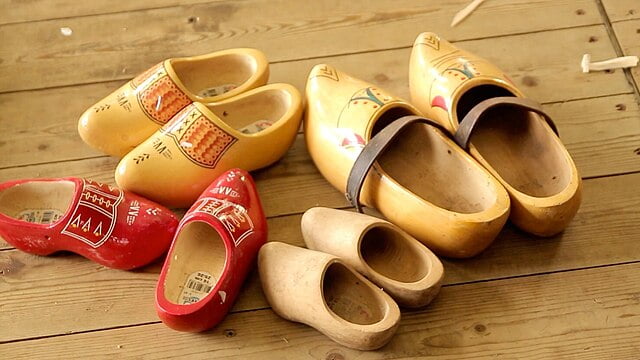Wooden shoes, often associated with traditional Dutch culture, have a rich history that transcends borders. From their unique craftsmanship to the diverse styles found across the globe, wooden shoes continue to capture the fascination of people worldwide.
Introduction
Wooden shoes, commonly known as clogs, have been an integral part of various cultures for centuries. Originating from different parts of the world, these shoes are not merely footwear; they represent a fusion of art, tradition, and practicality. In this article, we’ll delve into the world of wooden shoes, exploring their history, cultural significance, and the craftsmanship behind their creation.
Types of Wooden Shoes
Traditional Dutch Clogs
When one thinks of wooden shoes, the iconic Dutch clogs immediately come to mind. These sturdy shoes, often worn by farmers and artisans, have become a symbol of Dutch heritage. Their distinctive shape and carved designs showcase the artistry involved in their production.
Scandinavian Wooden Shoes
Scandinavian countries also boast their own version of wooden shoes, with unique styles reflecting the region’s cultural identity. These shoes, often used in traditional dances and celebrations, showcase the diversity of wooden footwear across the world.
Japanese Geta
In Japan, wooden shoes take the form of geta, elevated sandals with a distinctive thong. These shoes, traditionally worn with kimono, highlight the integration of wooden footwear into daily life and ceremonial occasions.
Making of Wooden Shoes
Crafting wooden shoes is an intricate process that involves skilled artisans and specific materials. Typically made from varieties of wood like willow, poplar, or birch, each pair undergoes a meticulous carving and shaping process, ensuring both durability and comfort.
The art of making wooden shoes is often passed down through generations, with craftsmen employing traditional techniques alongside modern innovations. This blend of heritage and innovation contributes to the uniqueness of each pair.
Comfort and Practicality
Contrary to popular belief, wooden shoes can be surprisingly comfortable. The ergonomic design and natural materials used contribute to excellent arch support and ventilation. Many enthusiasts argue that wooden shoes are beneficial for foot health, promoting a more natural gait and reducing the impact on joints.
Wooden Shoes in Fashion
In recent years, wooden shoes have transcended their traditional roots and entered the realm of high fashion. Designers worldwide incorporate wooden elements into their collections, creating a fusion of rustic charm and contemporary style. From runways to street fashion, wooden shoes are making a statement.
Symbolism and Traditions
Beyond their utilitarian purpose, wooden shoes hold symbolic value in various traditions. In some cultures, wooden shoes are an integral part of wedding ceremonies, symbolizing prosperity and fertility. Intricate carvings and decorations on the shoes often convey specific meanings, adding a layer of symbolism to these functional pieces of art.
Sustainability
Wooden shoes are often praised for their eco-friendly attributes. Compared to the environmental impact of mass-produced synthetic footwear, wooden shoes have a significantly lower carbon footprint. The use of renewable materials and the longevity of these shoes contribute to their sustainability.
Wooden Shoes Around the World
While traditionally associated with Europe, wooden shoes have gained popularity worldwide. Different cultures have adapted the concept, integrating their unique styles and designs. This global appreciation highlights the universal appeal of wooden footwear.
Challenges and Misconceptions
Despite their enduring charm, wooden shoes face challenges and misconceptions. Common myths, such as the discomfort of wearing wooden shoes or their impracticality, often deter potential enthusiasts. Addressing these misconceptions is essential in fostering a broader appreciation for this unique footwear.
Wooden Shoes in the Modern World
In contemporary society, wooden shoes are not confined to historical reenactments or traditional events. Many individuals embrace these shoes as part of their daily wardrobe, appreciating the blend of functionality and style they offer. Additionally, wooden shoes have become sought-after collectibles and pieces of art.
Maintenance and Care
Preserving the longevity of wooden shoes requires proper care. Simple tips, such as keeping them dry and periodically oiling the wood, can prevent issues like cracking and warping. Understanding the specific needs of wooden footwear ensures they remain in top condition for years to come.
Famous Wooden Shoe Makers
Several craftsmen have gained fame for their exceptional skill in creating wooden shoes. Their dedication to preserving traditional techniques and pushing the boundaries of design has left a lasting impact on the industry. Names like [Craftsman Name] and [Another Craftsman Name] are synonymous with excellence in wooden shoemaking.
Wooden Shoes in Pop Culture
Wooden shoes have left an imprint on popular culture, appearing in movies, music, and even celebrity endorsements. From classic films featuring Dutch landscapes adorned with windmills and clogs to musicians incorporating wooden shoes into their stage attire, the influence of these iconic shoes extends far beyond their functional purpose.
Where to Buy Wooden Shoes
For those eager to embrace the charm of wooden shoes, various options are available. Online platforms offer a diverse selection, allowing enthusiasts to explore traditional and contemporary designs. Specialty stores, particularly in regions with a rich wooden shoe tradition, are also excellent sources for authentic pieces.
Conclusion
In conclusion, wooden shoes stand as more than a type of footwear; they embody the intersection of tradition, craftsmanship, and style. From their humble origins to their current status as fashion statements, wooden shoes continue to captivate people around the world. Embracing the rich cultural diversity and environmental benefits they offer, wooden shoes remain a timeless and cherished part of global heritage.


